 This 4-page fact sheet discusses the purpose of castration in male calves as well as the different methods used to castrate. Most methods of castration cause a certain amount of pain and stress for calves, which can affect calf performance. UF/IFAS researchers recently tested different methods of castration in calves to determine the effects of each method on calf health and performance. This publication presents these results. Written by Trey Warnock, Matt Hersom, and Todd Thrift, and published by the UF Department of Animal Sciences, December 2013.
This 4-page fact sheet discusses the purpose of castration in male calves as well as the different methods used to castrate. Most methods of castration cause a certain amount of pain and stress for calves, which can affect calf performance. UF/IFAS researchers recently tested different methods of castration in calves to determine the effects of each method on calf health and performance. This publication presents these results. Written by Trey Warnock, Matt Hersom, and Todd Thrift, and published by the UF Department of Animal Sciences, December 2013.
http://edis.ifas.ufl.edu/an291
Author: dihagan
Compact Growth Habit Tomatoes
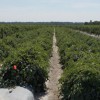 Alternatives to the traditional production system that reduce production cost would be economically beneficial to the Florida tomato industry. Compact growth habit tomatoes are determinate varieties with a unique architecture that may provide the basis for a viable alternative production system for Florida. These tomatoes have low growth and spreading characteristics, forming compact plants that hold fruit above the ground on short branches. They do not require staking, tying, or pruning, so they may be used by the Florida mature-green fresh-market tomato growers to reduce labor costs. This 5-page fact sheet was written by Monica Ozores-Hampton, Aline Coelho Frasca, John Scott, and Samuel Hutton, and published by the UF Department of Horticultural Sciences, September 2014.
Alternatives to the traditional production system that reduce production cost would be economically beneficial to the Florida tomato industry. Compact growth habit tomatoes are determinate varieties with a unique architecture that may provide the basis for a viable alternative production system for Florida. These tomatoes have low growth and spreading characteristics, forming compact plants that hold fruit above the ground on short branches. They do not require staking, tying, or pruning, so they may be used by the Florida mature-green fresh-market tomato growers to reduce labor costs. This 5-page fact sheet was written by Monica Ozores-Hampton, Aline Coelho Frasca, John Scott, and Samuel Hutton, and published by the UF Department of Horticultural Sciences, September 2014.
http://edis.ifas.ufl.edu/hs1231
Apalachee Crapemyrtle: Lagerstroemia indica × fauriei 'Apalachee'
 ‘Apalachee’ crapemyrtle is a small deciduous tree with lavender flowers, dark green leaves, and cinnamon-orange bark. Lagerstroemia indica x fauriei ‘Apalachee’ is one of the hybrids released in 1987 from the breeding program of the U.S. National Arboretum. It grows as an upright to vase-shaped multi-stemmed tree in USDA Cold Hardiness Zones 7a-9b. This 2-page fact sheet was written by Gary W. Knox, and published by the UF Department of Environmental Horticulture, December 2014.
‘Apalachee’ crapemyrtle is a small deciduous tree with lavender flowers, dark green leaves, and cinnamon-orange bark. Lagerstroemia indica x fauriei ‘Apalachee’ is one of the hybrids released in 1987 from the breeding program of the U.S. National Arboretum. It grows as an upright to vase-shaped multi-stemmed tree in USDA Cold Hardiness Zones 7a-9b. This 2-page fact sheet was written by Gary W. Knox, and published by the UF Department of Environmental Horticulture, December 2014.
http://edis.ifas.ufl.edu/ep491
Soil Testing Information Sheets
Use these forms to send samples to the UF/IFAS Extension Soil Testing Laboratory
- Commercial Sod Test Form
- Container Media Test Form
- Landscape and Vegetable Garden Test Form
- Livestock Waste Testing Form
- Nutrient Testing Form for Bahia Pastures
- Phosphorus Index Test Form
- Pine Nursery Soil Test Form
- Plant Tissue Test Form
- Producer Citrus Test Form
- Producer Soil Test Form
- Water Test Form
http://edis.ifas.ufl.edu/topic_soil_testing_information_sheets
Hojas de Informacion de Analisis de Suelos
Llena estas formas para enviar las muestras al UF/IFAS Laboratorio de Servicios Analíticos Laboratorio de Extensión de Análisis de Suelos
- Análisis de Agua
- Análisis de Estiércol
- Análisis de Medios de Macetas
- Análisis de Nutrientes para Pastos de Bahía
- Análisis de Suelo para Césped Comercial
- Análisis de Suelo de Jardines y Huertos
- Análisis de Suelo de Pinos
- Análisis de Suelo para Productores
- Análisis de Tejido Vegetal
- Análisis para Productor de Cítricos
- Índice de Fósforo
http://edis.ifas.ufl.edu/topic_hojas_de_informacion_de_analisis_de_suelos
Stewardship Ecosystem Services Study Series: Assessing Forest Water Yield and Purification Ecosystem Services in the Lower Suwannee River Watershed, Florida
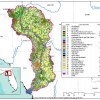 Land-use decisions and ecosystem characteristics affect the amounts of nutrients that end up in water bodies and the ability of the land to provide ecosystem services. Water quality is also highly valued by Florida forest landowners and managers. So, understanding the role of land use and forest cover and types, management practices, and conservation programs in reducing nutrient pollution will allow landowners, forest managers, and policy makers to make informed and better management decisions. In this 6-page fact sheet, we present the results of a study that used easily available models and information to assess the role of forests in providing ecosystem services, including water quality improvement or purification. Specifically, this assessment used available geospatial data and the InVEST Water Purification model to estimate how forest vegetation and soils purify water through the retention, and subsequent export, of nitrogen and phosphorus polluted runoff. Written by Sonia Delphin, Francisco J. Escobedo, Amr Abd-Elrahman, Alison E. Adams, Jackie Martin, Ronald Cademus, and published by the UF Department of School of Forest Resources and Conservation, January 2014.
Land-use decisions and ecosystem characteristics affect the amounts of nutrients that end up in water bodies and the ability of the land to provide ecosystem services. Water quality is also highly valued by Florida forest landowners and managers. So, understanding the role of land use and forest cover and types, management practices, and conservation programs in reducing nutrient pollution will allow landowners, forest managers, and policy makers to make informed and better management decisions. In this 6-page fact sheet, we present the results of a study that used easily available models and information to assess the role of forests in providing ecosystem services, including water quality improvement or purification. Specifically, this assessment used available geospatial data and the InVEST Water Purification model to estimate how forest vegetation and soils purify water through the retention, and subsequent export, of nitrogen and phosphorus polluted runoff. Written by Sonia Delphin, Francisco J. Escobedo, Amr Abd-Elrahman, Alison E. Adams, Jackie Martin, Ronald Cademus, and published by the UF Department of School of Forest Resources and Conservation, January 2014.
http://edis.ifas.ufl.edu/fr385
Measuring the Economic Value of the Environment and Natural Resources
 Conservation of natural resources requires investments of money, time, and effort by the government, businesses, landowners, conservation organizations, and the general public. Policies to conserve and manage natural resources should be based on a careful accounting of both the benefits and costs of conserving these resources. In a prior EDIS document, cost-benefit analysis and the role it plays in natural resources management and policy was discussed. This document extends that previous discussion by presenting more detailed information about how economists categorize the benefits of natural resources. This 4-page fact sheet was written by Elizabeth Pienaar, and published by the UF Department of Wildlife Ecology and Conservation, December 2014.
Conservation of natural resources requires investments of money, time, and effort by the government, businesses, landowners, conservation organizations, and the general public. Policies to conserve and manage natural resources should be based on a careful accounting of both the benefits and costs of conserving these resources. In a prior EDIS document, cost-benefit analysis and the role it plays in natural resources management and policy was discussed. This document extends that previous discussion by presenting more detailed information about how economists categorize the benefits of natural resources. This 4-page fact sheet was written by Elizabeth Pienaar, and published by the UF Department of Wildlife Ecology and Conservation, December 2014.
http://edis.ifas.ufl.edu/uw385
Facts about Fructose
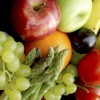 Fructose is a simple sugar found in many foods. Common table sugar is made of equal amounts fructose and glucose. Similarly, high-fructose corn syrup, commonly used to sweeten foods, contains a mixture of fructose and glucose. Fructose is sweeter than glucose, and for this reason it has been used in many sweetened foods. This 2-page fact sheet was written by Wendy Dahl, Lauren Foster, and Russel Owen, and published by the UF Department of Food Science and Human Nutrition, June 2013.
Fructose is a simple sugar found in many foods. Common table sugar is made of equal amounts fructose and glucose. Similarly, high-fructose corn syrup, commonly used to sweeten foods, contains a mixture of fructose and glucose. Fructose is sweeter than glucose, and for this reason it has been used in many sweetened foods. This 2-page fact sheet was written by Wendy Dahl, Lauren Foster, and Russel Owen, and published by the UF Department of Food Science and Human Nutrition, June 2013.
http://edis.ifas.ufl.edu/fs148
The Savvy Survey #11: Mail-Based Surveys
 As part of the Savvy Survey Series, this publication provides Extension faculty with an overview of the process that uses mail for sending and receiving questionnaires. Mail surveys can be an effective way to collect data for needs assessments in program planning or for follow-up surveys evaluating outcomes of Extension programs. Survey research consistently shows that mail surveys usually obtain as high or higher response rates than other methods. This fact sheet provides guidance for constructing the questionnaire, addressing visual design and formatting considerations, and implementing the survey. Extension faculty who incorporate best practices of questionnaire design and mail survey procedures will be able to achieve a high response rate and collect more useful data than those who don’t use these best practices. This 9-page fact sheet was written by Glenn D. Israel and Jessica L. Gouldthorpe, and published by the UF Department of Agricultural Education and Communication, October 2013.
As part of the Savvy Survey Series, this publication provides Extension faculty with an overview of the process that uses mail for sending and receiving questionnaires. Mail surveys can be an effective way to collect data for needs assessments in program planning or for follow-up surveys evaluating outcomes of Extension programs. Survey research consistently shows that mail surveys usually obtain as high or higher response rates than other methods. This fact sheet provides guidance for constructing the questionnaire, addressing visual design and formatting considerations, and implementing the survey. Extension faculty who incorporate best practices of questionnaire design and mail survey procedures will be able to achieve a high response rate and collect more useful data than those who don’t use these best practices. This 9-page fact sheet was written by Glenn D. Israel and Jessica L. Gouldthorpe, and published by the UF Department of Agricultural Education and Communication, October 2013.
http://edis.ifas.ufl.edu/pd071
Facts about Phosphorus
 Phosphorus is a mineral found in every cell of the body, usually in the form of phosphate. It is the second most abundant mineral in the body after calcium. About 85% of phosphorus is stored in the bones and teeth. It is important for forming bones and teeth, as well as repairing bones. This 3-page fact sheet was written by Nancy J. Gal and Wendy J. Dahl, and published by the UF Department of Food Science and Human Nutrition, January 2014.
Phosphorus is a mineral found in every cell of the body, usually in the form of phosphate. It is the second most abundant mineral in the body after calcium. About 85% of phosphorus is stored in the bones and teeth. It is important for forming bones and teeth, as well as repairing bones. This 3-page fact sheet was written by Nancy J. Gal and Wendy J. Dahl, and published by the UF Department of Food Science and Human Nutrition, January 2014.
http://edis.ifas.ufl.edu/fs237
Working in Groups: Facilitating Positive Group Interactions
 Working together in groups can be a great experience or one filled with stress and anxiety. The goal of facilitating positive group interaction is for every group member to contribute in a more positive and productive manner. This article will review several methods that can facilitate positive group interactions, which will also enhance communication and overall group work. This 3-page fact sheet was written by Bryan D. Terry, and published by the UF Department of Family Youth and Community Sciences, October 2013.
Working together in groups can be a great experience or one filled with stress and anxiety. The goal of facilitating positive group interaction is for every group member to contribute in a more positive and productive manner. This article will review several methods that can facilitate positive group interactions, which will also enhance communication and overall group work. This 3-page fact sheet was written by Bryan D. Terry, and published by the UF Department of Family Youth and Community Sciences, October 2013.
http://edis.ifas.ufl.edu/fy1377
Mapping Your World with Community Analyst: An Easy to Use Tool to Map the Characteristics of U.S. Communities
 In recent years, the number of mapping and geospatial tools that are both feature-rich and easy to use has increased. This is good news because it allows many more of us to capitalize on the power and unique insights that such tools can provide without having to spend inordinate amounts of time learning how to use them. This article presents Community Analyst, a web application that provides access to thousands of business, demographic, economic, education, and health data variables for the United States. The application’s extensive suite of data metrics, in conjunction with on-demand reports and interactive color-coded maps, allows one to quickly explore the characteristics of one or more geographic areas. This 9-page fact sheet was written by Robert Swett and Lisa Krimsky, and published by the UF Department of School of Forest Resources and Conservation, October 2014.
In recent years, the number of mapping and geospatial tools that are both feature-rich and easy to use has increased. This is good news because it allows many more of us to capitalize on the power and unique insights that such tools can provide without having to spend inordinate amounts of time learning how to use them. This article presents Community Analyst, a web application that provides access to thousands of business, demographic, economic, education, and health data variables for the United States. The application’s extensive suite of data metrics, in conjunction with on-demand reports and interactive color-coded maps, allows one to quickly explore the characteristics of one or more geographic areas. This 9-page fact sheet was written by Robert Swett and Lisa Krimsky, and published by the UF Department of School of Forest Resources and Conservation, October 2014.
http://edis.ifas.ufl.edu/fr383
Being Smart about Gluten and Gluten-free Issues, Part 2: What Retailers and Consumers Need to Know about Gluten and Gluten-free Product Labeling
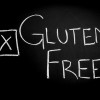 In 2011, gluten was recognized as having a specific link to celiac disease, and some consumers hoping to minimize the symptoms of celiac disease have opted to modify their diets. This is the second of a three-part series of publications called “Being Smart about Gluten and Gluten-Free Issues.” The purpose of this publication is to supply retailers and consumers with easy-to-understand information about labeling as related to gluten-free products. This 3-page fact sheet was written by Abigail Dicks, Amy Harder, and Amy Simonne, and published by the UF Department of Agricultural Education and Communication, September 2014.
In 2011, gluten was recognized as having a specific link to celiac disease, and some consumers hoping to minimize the symptoms of celiac disease have opted to modify their diets. This is the second of a three-part series of publications called “Being Smart about Gluten and Gluten-Free Issues.” The purpose of this publication is to supply retailers and consumers with easy-to-understand information about labeling as related to gluten-free products. This 3-page fact sheet was written by Abigail Dicks, Amy Harder, and Amy Simonne, and published by the UF Department of Agricultural Education and Communication, September 2014.
http://edis.ifas.ufl.edu/wc153
Safe Dishwashing Without an Automatic Dishwasher for Home, Community Events, and Outdoor Activities
 Most of us are accustomed to the ease and convenience of washing our dishes in an automatic dishwasher. At times, however, no dishwasher is available. This 4-page fact sheet teaches ways to safely wash or clean your dishes by hand, which may be necessary when your dishwasher is broken, you are outdoors, or you are working in a facility without a dishwasher. Written by Morgan Denhard, Amy Simonne, and Ricki McWilliams, and published by the UF Department of Family Youth and Community Sciences, December 2014.
Most of us are accustomed to the ease and convenience of washing our dishes in an automatic dishwasher. At times, however, no dishwasher is available. This 4-page fact sheet teaches ways to safely wash or clean your dishes by hand, which may be necessary when your dishwasher is broken, you are outdoors, or you are working in a facility without a dishwasher. Written by Morgan Denhard, Amy Simonne, and Ricki McWilliams, and published by the UF Department of Family Youth and Community Sciences, December 2014.
http://edis.ifas.ufl.edu/fy1403
Raising Healthy Children: Promoting a Positive Feeding Experience
 All parents have heard “I don’t like that!” or “I’m not hungry!” from their child at some point or another. It’s likely that your child will not like every food that is served, but that doesn’t mean mealtime can’t still be a pleasant experience for the family. Parents may think they have sole responsibility for their child’s food choices, but Ellyn Satter, a registered dietitian who specializes in feeding and eating, advises that young children also have responsibility in the eating process. If feeding your child is stressful, read this fact sheet to learn about the division of responsibility in feeding and how to make meal times more enjoyable for the whole family. This 3-page fact sheet was written by Tiffany N. Stodtko, Karla P. Shelnutt, and Gail P.A. Kauwell, and published by the UF Department of Family Youth and Community Sciences, December 2014.
All parents have heard “I don’t like that!” or “I’m not hungry!” from their child at some point or another. It’s likely that your child will not like every food that is served, but that doesn’t mean mealtime can’t still be a pleasant experience for the family. Parents may think they have sole responsibility for their child’s food choices, but Ellyn Satter, a registered dietitian who specializes in feeding and eating, advises that young children also have responsibility in the eating process. If feeding your child is stressful, read this fact sheet to learn about the division of responsibility in feeding and how to make meal times more enjoyable for the whole family. This 3-page fact sheet was written by Tiffany N. Stodtko, Karla P. Shelnutt, and Gail P.A. Kauwell, and published by the UF Department of Family Youth and Community Sciences, December 2014.
http://edis.ifas.ufl.edu/fy1397
The Savvy Survey #3: Successful Sampling
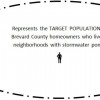 As part of the Savvy Survey series, this publication provides Extension faculty with an overview of topics to consider when thinking about who should be surveyed. Topics in this publication include understanding the survey population, constructing the sampling frame, recognizing who exists outside the population of interest, and defining the sample. This 5-page fact sheet also provides insight on issues such as over-coverage and error that can arise because of poor sampling procedures. Written by Glenn D. Israel and Jessica L. Gouldthorpe, and published by the UF Department of Agricultural Education and Communication, October 2013.
As part of the Savvy Survey series, this publication provides Extension faculty with an overview of topics to consider when thinking about who should be surveyed. Topics in this publication include understanding the survey population, constructing the sampling frame, recognizing who exists outside the population of interest, and defining the sample. This 5-page fact sheet also provides insight on issues such as over-coverage and error that can arise because of poor sampling procedures. Written by Glenn D. Israel and Jessica L. Gouldthorpe, and published by the UF Department of Agricultural Education and Communication, October 2013.
http://edis.ifas.ufl.edu/pd063
Important Things to Know about Medicare series
 As an older adult citizen of the United States, it is important to understand the structure of Medicare and how it affects you. The information in this series is based on the most current data available and includes several changes with the implementation of the Affordable Care Act. This guide was also written using Florida guidelines when appropriate. Please bear in mind that your personal situation may vary from the examples in the series, and always contact your local Medicare representative for questions regarding your own circumstances.
As an older adult citizen of the United States, it is important to understand the structure of Medicare and how it affects you. The information in this series is based on the most current data available and includes several changes with the implementation of the Affordable Care Act. This guide was also written using Florida guidelines when appropriate. Please bear in mind that your personal situation may vary from the examples in the series, and always contact your local Medicare representative for questions regarding your own circumstances.
- Introduction and Overview
- Chapter One–Who Is Eligible for Medicare, and Do I Have To Sign Up for It?
- Chapter Two: Medicare Part A–Hospital Insurance
- Chapter Three: Medicare Part B–Medical Insurance
- Chapter Four–Medicare Part C – Medicare Advantage
- Chapter Five–Medicare Part D–Prescription Drug Coverage
- Chapter Six–“Medigap” Policies
- Chapter Seven–How does my other insurance work with Medicare? Who pays first?
- Chapter Eight–What if I need help paying my health care and prescription drug costs?
- Chapter Nine–How should I decide how I want to get my Medicare?
- Chapter Ten–Key Terms, Additional Resources, List of Handouts, and References
Written by Amanda Terminello and Martie Gillen, and published by the UF Department of Family Youth and Community Sciences, September 2013.
http://edis.ifas.ufl.edu/topic_series_important_things_to_know_about_medicare
How to Make a Bed Bug Interceptor Trap out of Common Household Items
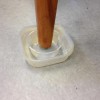 Bed bugs have become an increasingly common pest problem throughout the United States. To discover whether bed bugs are present in a room or a piece of furniture, you can make interceptor traps out of commonly found household items and disposable plastic containers. This 5-page fact sheet was written by Benjamin A. Hottel, Rebecca W. Baldwin, Roberto M. Pereira, and Philip G. Koehler, and published by the UF Department of Entomology and Nematology, January 2014.
Bed bugs have become an increasingly common pest problem throughout the United States. To discover whether bed bugs are present in a room or a piece of furniture, you can make interceptor traps out of commonly found household items and disposable plastic containers. This 5-page fact sheet was written by Benjamin A. Hottel, Rebecca W. Baldwin, Roberto M. Pereira, and Philip G. Koehler, and published by the UF Department of Entomology and Nematology, January 2014.
http://edis.ifas.ufl.edu/in1022
Late Blight of Tomato and Potato
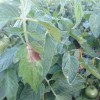 Late blight is showing up on tomatoes and potatoes around southwest Florida. This is an aggressive disease capable of rapidly destroying entire fields. The disease is distributed worldwide and occurs wherever tomatoes or potatoes are grown and conditions favor disease development.
Late blight is showing up on tomatoes and potatoes around southwest Florida. This is an aggressive disease capable of rapidly destroying entire fields. The disease is distributed worldwide and occurs wherever tomatoes or potatoes are grown and conditions favor disease development.
http://edis.ifas.ufl.edu/pp301
Water Issues in Florida: How Extension Can Facilitate Stakeholder Engagement and Involvement
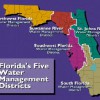 This 6-page fact sheet is a brief description of recent discussions and policies surrounding water management, use, and quality in Florida. The goal of this publication is to provide brief, but clear, information about the trends in policies that can be used by Extension agents to increase educated conversations about water issues. Water in Florida is a contested issue, and Extension agents may be called upon as a source of unbiased information by the public. Having an understanding of important agricultural and natural resources issues in Florida, including water, can help facilitate conversation, raise awareness, and lead to informed decision making. Written by Erica Odera, Alexa Lamm, Tracy Irani, Hannah Carter, and Sebastian Galindo-Gonzalez, and published by the UF Department of Agricultural Education and Communication, December 2013.
This 6-page fact sheet is a brief description of recent discussions and policies surrounding water management, use, and quality in Florida. The goal of this publication is to provide brief, but clear, information about the trends in policies that can be used by Extension agents to increase educated conversations about water issues. Water in Florida is a contested issue, and Extension agents may be called upon as a source of unbiased information by the public. Having an understanding of important agricultural and natural resources issues in Florida, including water, can help facilitate conversation, raise awareness, and lead to informed decision making. Written by Erica Odera, Alexa Lamm, Tracy Irani, Hannah Carter, and Sebastian Galindo-Gonzalez, and published by the UF Department of Agricultural Education and Communication, December 2013.
http://edis.ifas.ufl.edu/wc151